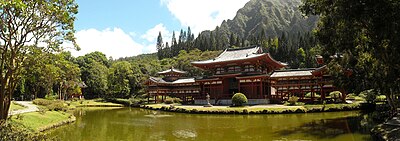TIPITAKA
TIPITAKA AND TWELVE DIVISIONS
Brief historical background
Sutta Pitaka
Vinaya Pitaka
Abhidhamma Pitaka
Twelve Divisions of Buddhist Canons
Nine Divisions of Buddhist Canons
Sutta Piṭaka
— The basket of discourses —
[ sutta: discourse ]
Dīgha Nikāya
Mahāparinibbāna Sutta
Dhammapada Verses 246,247 and 248 Panca Upasaka Vatthu-Verse 246. Wrong Deeds To Avoid-Verse 247. Precepts The Lay Person Should Follow-Verse 248. These Precepts Prevent Suffering
AWAKEN ONE WITH AWARENESS ONLINE GOOD NEWS LETTER
Hawaii
This sutta gathers various instructions the Buddha gave for the
sake of his followers after his passing away, which makes it be a very
important set of instructions for us nowadays.
Pāḷi |
English |
|
|
|
| (Dhammādāsa)
Dhammādāsaṃ nāma dhamma-pariyāyaṃ desessāmi, yena samannāgato ariyasāvako ākaṅkhamāno attanāva attānaṃ byā-kareyya: ‘khīṇa-nirayo-mhi khīṇa-tiracchāna-yoni khīṇa-pettivisayo khīṇ‘āpāya-duggati-vinipāto, sotāpanno-hamasmi avinipāta-dhammo niyato sambodhi-parāyaṇo‘ ti. |
(The Mirror of the Dhamma)
தமிழ் நான் Dhammādāsa (தம்மாவின் உருப்பளிங்கு) என கருதப்படும் தம்மாவை வியாக்கியானம் பண்ண பிரசங்கம் செய்ய விரும்புகிரேன், ariyasāvaka (புனிதமான சீடர்) ஆக ஆட்கொண்டு, ஒருவேளை அவர் தானே விரும்பி உறுதியாக்கிக் கொண்டால்: |
|
Katamo ca so, Ānanda, dhammādāso dhamma-pariyāyo, yena samannāgato ariyasāvako ākaṅkhamāno attanāva attānaṃ byā-kareyya: ‘khīṇa-nirayo-mhi khīṇa-tiracchāna-yoni khīṇa-pettivisayo khīṇ‘āpāya-duggati-vinipāto, sotāpanno-hamasmi avinipāta-dhammo niyato sambodhi-parāyaṇo‘ ti? |
மற்றும் என்ன,Ānanda (ஆனந்தா),தம்மா மீது ஆன அந்த பிரசங்கம் Dhammādāsa (தம்மாவின் உருப்பளிங்கு) என கருதப்படும் தம்மாவை வியாக்கியானம் பண்ண பிரசங்கம் செய்ய விரும்புகிரேன்,ariyasāvaka (புனிதமான சீடர்)ஆக ஆட்கொண்டு,ஒருவேளை அவர் தானே விரும்பி உறுதியாக்கிக் கொண்டால்: |
|
Idh‘ānanda, ariyasāvako Buddhe aveccappasāda samannāgato hoti: |
இங்கு,ஆனந்தா,புனிதமான சீடர் Buddhe aveccappasāda (புத்தர் இடத்தில் தன்னம்பிக்கை)உடைய வராக குணிக்கப் படுகிரார். |
Dhamme aveccappasāda:(தம்மா இடத்தில் தன்னம்பிக்கை)உடைய வராக குணிக்கப் படுகிரார்.
|
|
|
|
|
|
| Saṅghe aveccappasāda (சான்றோர் இடத்தில் தன்னம்பிக்கை)உடைய வராக குணிக்கப் படுகிரார்.
|
|
புனிதமானவர்கள் ஏற்றுக்கொள்ளத்தக்க சீலராக குணிக்கப் படுகிரார். |
|
|
Ayaṃ kho so, Ānanda, dhammādāso dhamma-pariyāyo, yena samannāgato ariyasāvako ākaṅkhamāno attanāva attānaṃ byā-kareyya: ‘khīṇa-nirayo-mhi khīṇa-tiracchāna-yoni khīṇa-pettivisayo khīṇ‘āpāya-duggati-vinipāto, sotāpanno-hamasmi avinipāta-dhammo niyato sambodhi-parāyaṇo‘ ti |
இது, Ānanda (ஆனந்தா),தம்மா மீது ஆன அந்த பிரசங்கம் Dhammādāsa (தம்மாவின் |
|
|
|
|
Sato, bhikkhave, bhikkhu vihareyya sampajāno. Ayaṃ vo amhākaṃ anusāsanī. |
Sato should you remain, bhikkhus, and sampajānos. This is our intruction to you. Sato(கவனமான) நீர் இருக்க வேண்டும்,bhikkhus (பிக்குக்கள்),மேலும் sampajānos(மாறா இயல்பு அநித்தியத்தை பகுத்தறிதல்).இது தான் உமக்கு |
|
Katha‘ñca, bhikkhave, bhikkhu sato hoti? Idha, bhikkhave, bhikkhu |
மற்றும் எப்படி,பிக்குக்கள், பிக்கு sato (கவனமான) இருக்கிரார்? இங்கு,பிக்குக்கள், ஒரு பிக்கு |
|
Evaṃ kho, bhikkhave, bhikkhu sato hoti. Katha‘ñca, bhikkhave, bhikkhu sampajāno hoti? Idha, bhikkhave, |
இப்படி,பிக்குக்கள்,பிக்கு sato (கவனமான) இருக்கிரார்.மற்றும் எப்படி,பிக்குக்கள், பிக்கு sampajānos(மாறா இயல்பு அநித்தியத்தை பகுத்தறிதல்)ஆகிரார்? இங்கு,பிக்குக்கள், |
| |
|
Evaṃ kho, bhikkhave, bhikkhu sampajāno hoti. Sato, bhikkhave, bhikkhu vihareyya sampajāno. Ayaṃ vo amhākaṃ anusāsanī ti. |
இப்படி,பிக்குக்கள்,பிக்கு sampajānos(மாறா இயல்பு அநித்தியத்தை பகுத்தறிதல்)ஆகிரார்,Sato(கவனமான) நீர் இருக்க வேண்டும்,பிக்குக்கள்,மற்றும்sampajānos(மாறா இயல்பு அநித்தியத்தை பகுத்தறிதல்),இது தான் உமக்கு |
|
|
|
|
|
-ஆனந்தா,பூவா பருவகாலமாக இருந்த போதிலும், இரட்டை sala (சாலா) மரங்கள் முழு மலர்ச்சி அடைந்து இருக்கிறது. மற்றும் Tathagata (குறைபாடற்றவரை) வழிபாடு செய்தல் போல் Tathagata(குறைபாடற்றவர்) உடல் மேலே பூமழை பொழிந்து, துளி சிதற, இரத்தினப்பிரபையாகியது. மற்றும் தேவலோக பவழமலர்கள் மற்றும் சுவர்க்கத்தைச் சேர்ந்த சந்தன மரத் தூள் வானத்தில் இருந்து மழை கீழ் நோக்கி Tathagata (குறைபாடற்றவர்) உடல் மேலே பொழிந்து, மற்றும் Tathagata (குறைபாடற்றவரை) வழிபாடு செய்தல் போல் Tathagata(குறைபாடற்றவர்) உடல் மேலே பூமழை பொழிந்தது. மற்றும் Tathagata(குறைபாடற்றவர்) போற்றுதலைக் காட்டுஞ் சமிக்கையால் சுவர்க்கத்தைச் சேர்ந்த குரல் ஒலி மற்றும் இசைகருவிகள் காற்றுவெளியில் வெளிப்படுத்தியது. |
|
Na kho, Ānanda, ettāvatā Tathāgato sakkato vā hoti garukato vā mānito vā pūjito vā apacito vā. Yo kho, Ānanda, bhikkhu vā bhikkhunī vā upāsako vā upāsikā vā dhammānudhammappaṭipanno viharati sāmīcippaṭipanno anudhammacārī, so Tathāgataṃ sakkaroti garuṃ karoti māneti pūjeti apaciyati, paramāya pūjāya. Tasmātih‘ānanda, dhammānudhammappaṭipannā viharissāma sāmīcippaṭipannā anudhammacārin‘oti. Evañ‘hi vo, Ānanda, sikkhitabba nti. |
இதனால் மட்டும் அல்ல, ஆனந்தா,Tathagata (குறைபாடற்றவரை) உபசரித்தது, மரியாதை செலுத்தியது, நன்குமதிக்கப் பட்டது, மனந்திறந்த புகழுரைத்தது, கெளரவம் செலுத்தியது. ஆனால், ஆனந்த, எந்த ஒரு பிக்குவோ அல்லது பிக்குனியோ, உபாசகன் அல்லது உபாசகி, dhamm’ānudhamma’p'paṭipanna, sāmīci’p'paṭipanna, தம்மாவிற்கு பொருந்துமாறு பயிற்சிக்கிராரோ அவர் Tathagata (குறைபாடற்றவரை) உபசரித்தது, மரியாதை செலுத்தி, நன்குமதித்து, மனந்திறந்த புகழுரைத்தது, கெளரவம் செலுத்தி. மிக உயர்ந்த அளவு நேர்த்திவாய்ந்த மனந்திறந்த புகழுரையாற்றுவர். இதுக்காக, ஆனந்தா, நீங்கள், நீங்களாகவே பயிற்சித்தல் இதுதான்: நாங்கள் dhamm’ānudhamma’p'paṭipanna, sāmīci’p'paṭipanna, தம்மாவிற்கு பொருந்துமாறு வாழ்க்கை முறையில் தொடர்ந்திருப்போம். |
|
|
|
|
|
உங்கள் சிலர்ருக்கு, ஆனந்தா,இவ்வாறு நேரிடக் கூடும்: |
|
|
|
with the support of Sister Vajira & Francis Story’s translation.
———oOo———
Published as a gift of Dhamma, to be distributed free of charge.
Any copies or derivatives of this work must cite their original source.
 |
Verse 246. Wrong Deeds To Avoid
Explanation: One day a group of lay disciples who only kept |
 |
Verse 247. Precepts The Lay Person Should Follow
Explanation: A man who is given to taking intoxicating drinks, |
 |
Verse 248. These Precepts Prevent Suffering
Explanation: Evil actions do not have restraint or discipline. |
Dhammapada Verses 246, 247 and 248
Panca Upasaka VatthuYo panamatipateti
musavadanca bhasati
loke adinnamadiyati
paradaranca gacchati.Suramerayapananca
yo naro anuyunjati
idheva meso lokasmim
mulam khanati attano.Evam bho purisa janahi
papadhamma asannata
ma tam lobho adhammo ca
ciram dukkhaya randhayum.Verses 246 & 247: He who destroys life, tells lies, takes what is not
given him, commits adultery and takes intoxicating drinks, digs up his own roots
even in this very life.Verse 248: Know this, O man! Not restraining oneself is evil; do not let
greed and ill will subject you to prolonged misery.
The Story of Five Lay-Disciples
While residing at the Jetavana monastery, the Buddha uttered Verses (246),
(247) and (248) of this book, with reference to five lay-disciples.On one occasion five lay-disciples were keeping sabbath at the Jetavana
monastery. Most of them were observing only one or two of the five moral
precepts (sila). Each one of them observing a particular precept claimed that
the precept observed by him was the most difficult and there were a lot of
arguments. In the end, they came to the Buddha with this problem. To them the
Buddha said, “You should not consider any individual precept as being
easy or unimportant. Each and every one of the precepts must be strictly
observed. Do not think lightly of any of the precepts; none of them is easy to
observe.”Then the Buddha spoke in verse as follows:
Verses 246 & 247: He who destroys life, tells
lies, takes what is not given him, commits adultery and takes
intoxicating drinks, digs up his own roots even in this very life.Verse 248: Know this, O man! Not restraining
oneself is evil; do not let greed and ill will subject you to
prolonged misery.
At the end of the discourse the five lay-disciples attained Sotapatti
Fruition.
AWAKEN ONE WITH AWARENESS ONLINE GOOD NEWS LETTER
Hawaii
• Byodo-In Temple
http://en.wikipedia.org/wiki/Byodo-In_Temple
Byodo-In Temple
|
|
| Byodo-In Temple | |
|---|---|
 |
|
| Byodo-In Temple in Hawai’i is a replica of the historic Byodoin Temple of Uji in Kyoto prefecture of Japan, established in 1052. | |
| Information | |
| Denomination | non-denominational |
| Founded | 1968 |
| Address | 47-200 Kahekili Hwy
Kaneohe, HI 96744 |
| Country | United States |
The Byodo-In (平等院) Temple is a non-denominational Buddhist temple located on the island of O’ahu in Hawai’i at the Valley of the Temples. At 47-200 Kahekili Highway, the Byodo-In Temple is a replica of a 900-year-old Buddhist place of worship at Uji in Kyoto prefecture of Japan. Inside the Byodo-In Temple is a nine-foot (3 m) Lotus Buddha, a wooden Buddha. It is covered in gold and lacquer. Outside is a three-ton, brass peace bell. Surrounding the temple are large koi
ponds that cover a total of two acres (8,000 m²). Around those ponds
are lush Japanese gardens set against a backdrop of towering cliffs of
the Ko’olau mountains. Sparrows are often seen fluttering about and playing in the garden trees while peacocks strut about displaying their beautiful feathers.
The Byodo-In Temple is visited and used by thousands of worshippers
from around the world. It welcomes people of all faiths to participate
in its traditions. Apart from worship, the temple grounds are also used
for weddings and office meetings.
http://en.wikipedia.org/wiki/Broken_Ridge_Buddhist_Temple
| Broken Ridge Buddhist Temple | |
|---|---|
| Information | |
| Denomination | Chogye |
| Founded | 1975 |
| Abbot(s) | Dohyun Gwon |
| Address | 2420 Halelaau Place, Honolulu, HI 96816 |
| Country | United States |
| Website | hawaiimuryangsa.com |
Broken Ridge Buddhist Temple (Hangul: 무량사 “Mu Ryang Sa”) is a Korean Buddhist temple on the island of Oahu in the U.S. state of Hawaii. Originally known as the “Dae Won Sa Temple,” it was constructed on King St in Honolulu in 1975. After being destroyed by fire, construction of the new temple located in the Palolo Valley began in 1986. Due to legal disputes construction was not completed until 2005.
• Daifukuji Soto Zen Mission, Honalo
http://en.wikipedia.org/wiki/Honalo,_Hawaii
• Hawaii Shingon Mission
http://en.wikipedia.org/wiki/Hawaii_Shingon_Mission
|
Shingon Shu Hawaii
|
|
 |
|
|
|
|
| Nearest city: | Honolulu, Hawaii |
|---|---|
| Coordinates: | 21°17′5″N 157°50′57″WCoordinates: 21°17′5″N 157°50′57″W |
| Area: | less than one acre |
| Built: | 1918, 1929 |
| Architect: | Hego Fuchino |
| Architectural style: | Japanese |
| Governing body: | Private |
| NRHP Reference#: | 02000386[1] |
| Added to NRHP: | April 26, 2002 |
Hawaii Shingon Mission or Shingon Shu Hawaii located at 915 Sheridan Street in Honolulu, Hawaii, is one of the most elaborate displays of Japanese Buddhist temple architecture in Hawaiʻi. It was first built in 1917-1918 by Nakagawa Katsutaro, a master builder of Japanese-style temples, then renovated in 1929 by Hego Fuchino, a self-taught man who was the first person of Japanese ancestry to become a licensed architect
in the Islands. The building underwent further changes in 1978, and was
considerably augmented in 1992. However, its most distinctive features
remain: the steep, hipped-gable roof (irimoya)
with rounded-gable projection, both with elaborate carvings on the
ends, and the glittering altar and interior furnishings from Japan that
signify its ties to esoteric Shingon Buddhism.
The temple was added to the National Register of Historic Places on 26 April 2002.[2] [3
• Honpa Hongwanji Mission of Hawai’i
http://en.wikipedia.org/wiki/Honpa_Hongwanji_Mission_of_Hawai%27i
http://www.atlantisadventures.com/waikiki
Welcome to Atlantis Adventures Waikiki
Atlantis Adventures is proud to be recognized as the largest provider
of tourist attractions on the Hawaiian Islands. Our spectacular island
setting is home to two of Hawaii’s most celebrated water adventures
including the fascinating Atlantis Submarines and the Atlantis Navatek
Cruises.
Atlantis Submarines Waikiki – Add deeper meaning to your island visit
by diving to depths well over 100 feet in the safety and comfort of an
air-conditioned, Coast Guard approved, real submarine. Located within
view of famous Diamond Head, the Atlantis dive site is frequented by
green turtles, sharks, stingrays, yellow tangs, eels, and many other
species of underwater marine life.
Atlantis Navatek Cruises – Enjoy an evening of tasty food,
entertainment, and unforgettable views aboard the sleek and
state-of-the-art vessel, the Navatek I. Royal Sunset Dinner and Sunset
Buffet Dinner guests are treated to live entertainment by some of
Hawaii’s finest vocalists, musicians, and beautiful dancers. Enjoy
music of the Pacific and beyond while gently cruising toward the sunset.
Navatek’s singers and dancers love to interact with guests, and there
are opportunities for couples to dance if they wish.
Experience the magic of our Atlantis Adventure tours and create a
lifetime of memories as you explore our majestic coastal waters
surrounding the cities of Waikiki and Honolulu. This will be an
experience to remember!
Come and explore everything that Atlantis Adventures Waikiki has to offer!



















